Shunfa Ceramics is a well-known ceramic jar manufacturer and supplier with 13 years of industry experience. We provide the production of different types of pottery, with 4 tunnel kiln processing production lines and exquisite pottery jar making process.
We strictly follow the following process for each pottery production:
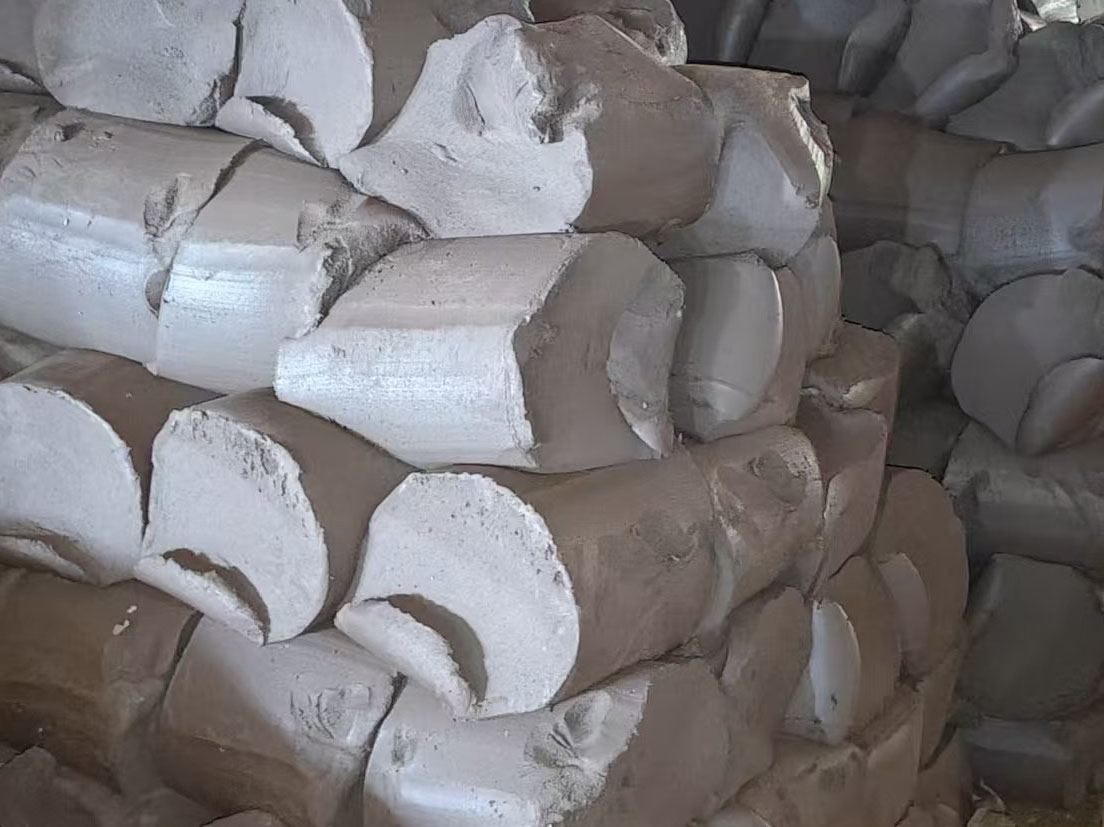
Clay Preparation
Practicing clay is the first step in making pottery jars, usually by placing natural clay in a clay machine and mechanically stirring and kneading it to remove impurities and bubbles. During the process, it is necessary to add water at the appropriate time to transform the clay into a fine and uniform clay slurry, reshaping its viscosity and toughness. Among them, the color of clay varies depending on the place of origin, with natural colors of reddish brown, earthy yellow, and grayish white setting a unique tone for subsequent products.
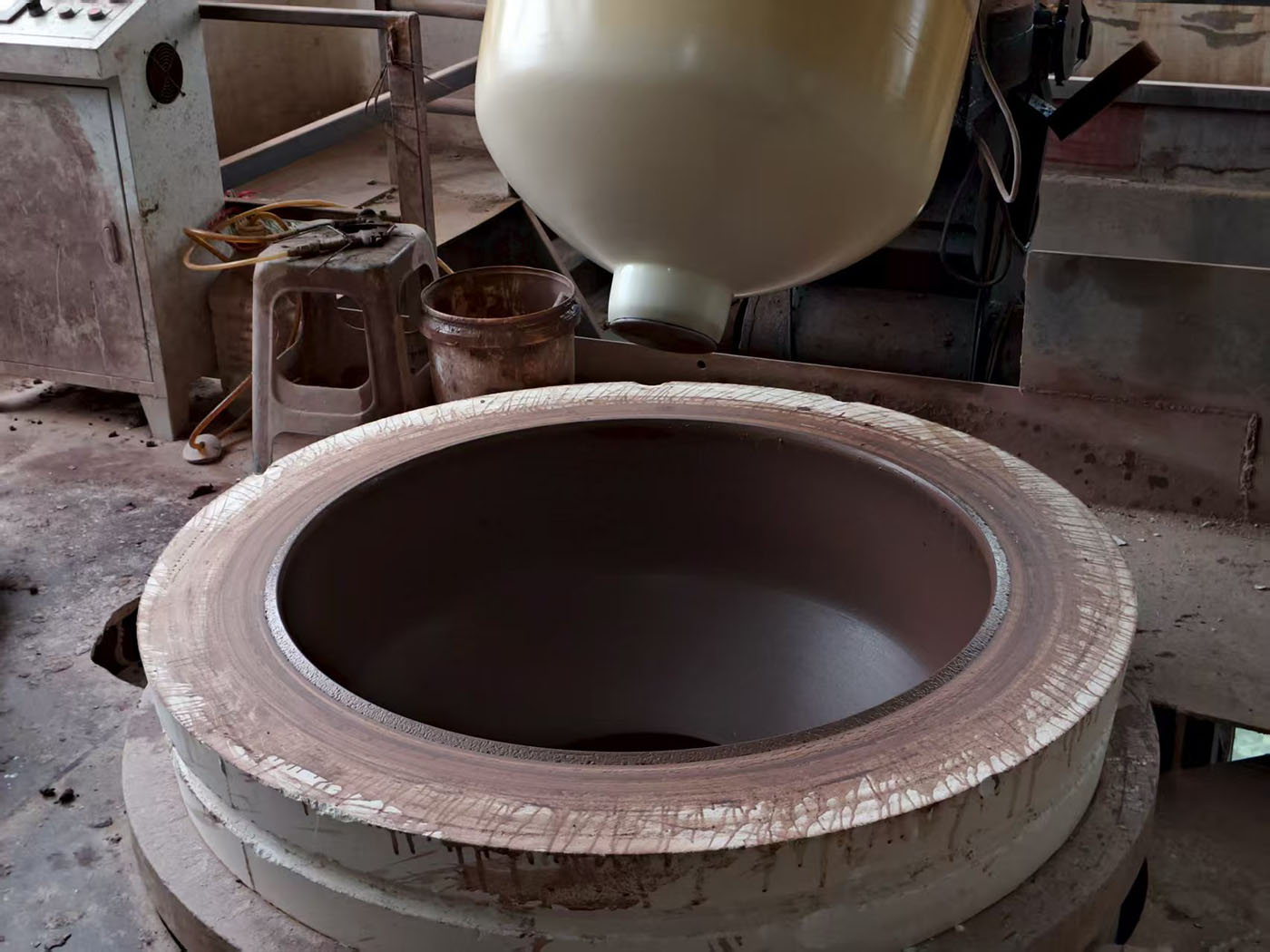
Forming
After preliminary treatment, the clay slurry enters the molding stage. With the help of pottery molds, the key to making pottery jars from clay is to quickly replicate the regular shape. Ceramic molds are formed by rolling, ensuring uniform wall thickness, smooth lines, and guaranteed appearance and quality of the tank body.
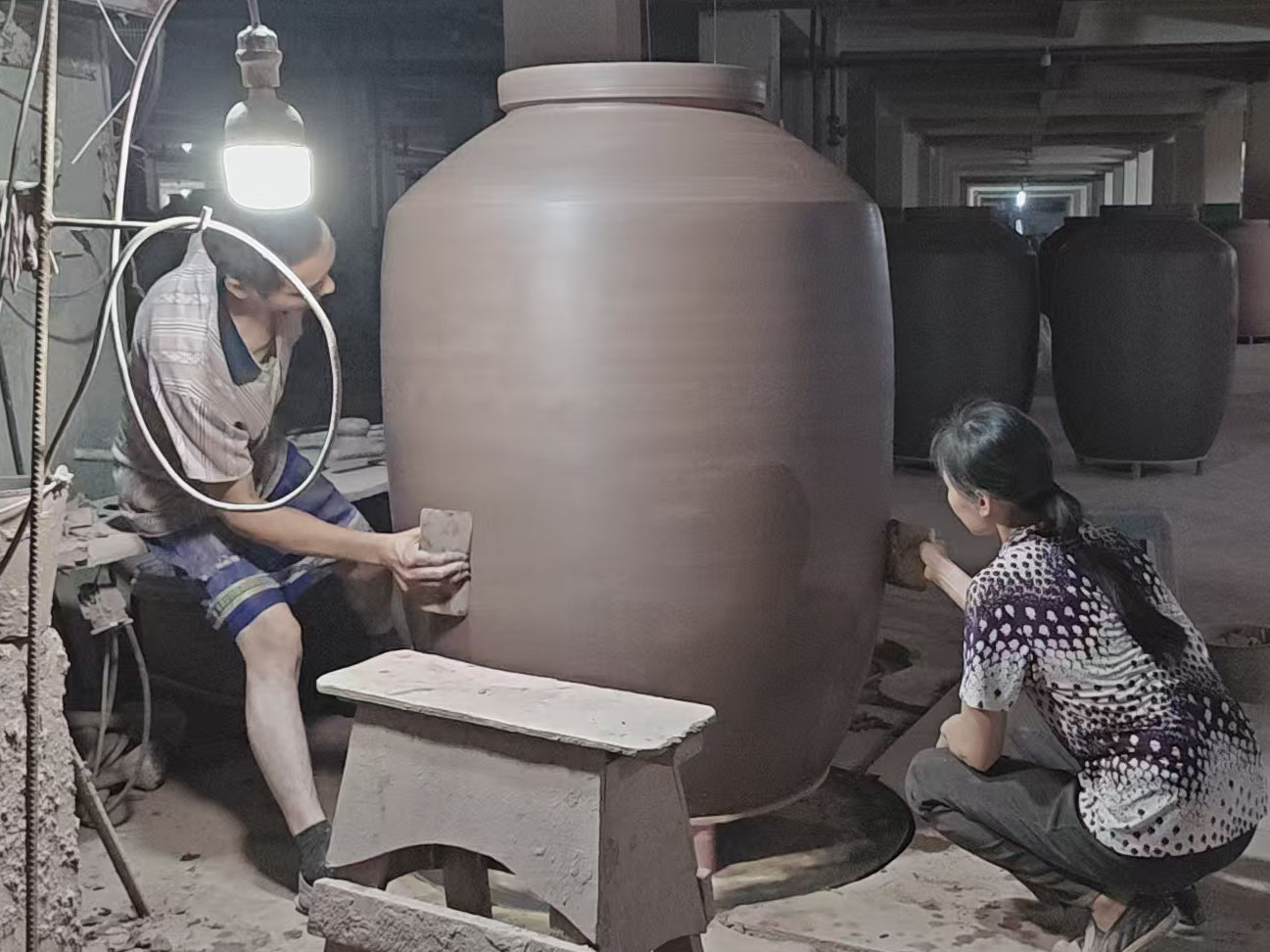
Repair
After the pottery jar takes shape, it needs to be refined in detail through the process of shaping. The craftsman holds a tool and meticulously removes excess clay, corrects uneven areas, and makes the surface of the tank smooth and regular. This step not only optimizes the appearance of the pottery jar, but also enhances its structural stability, laying the foundation for subsequent steps.
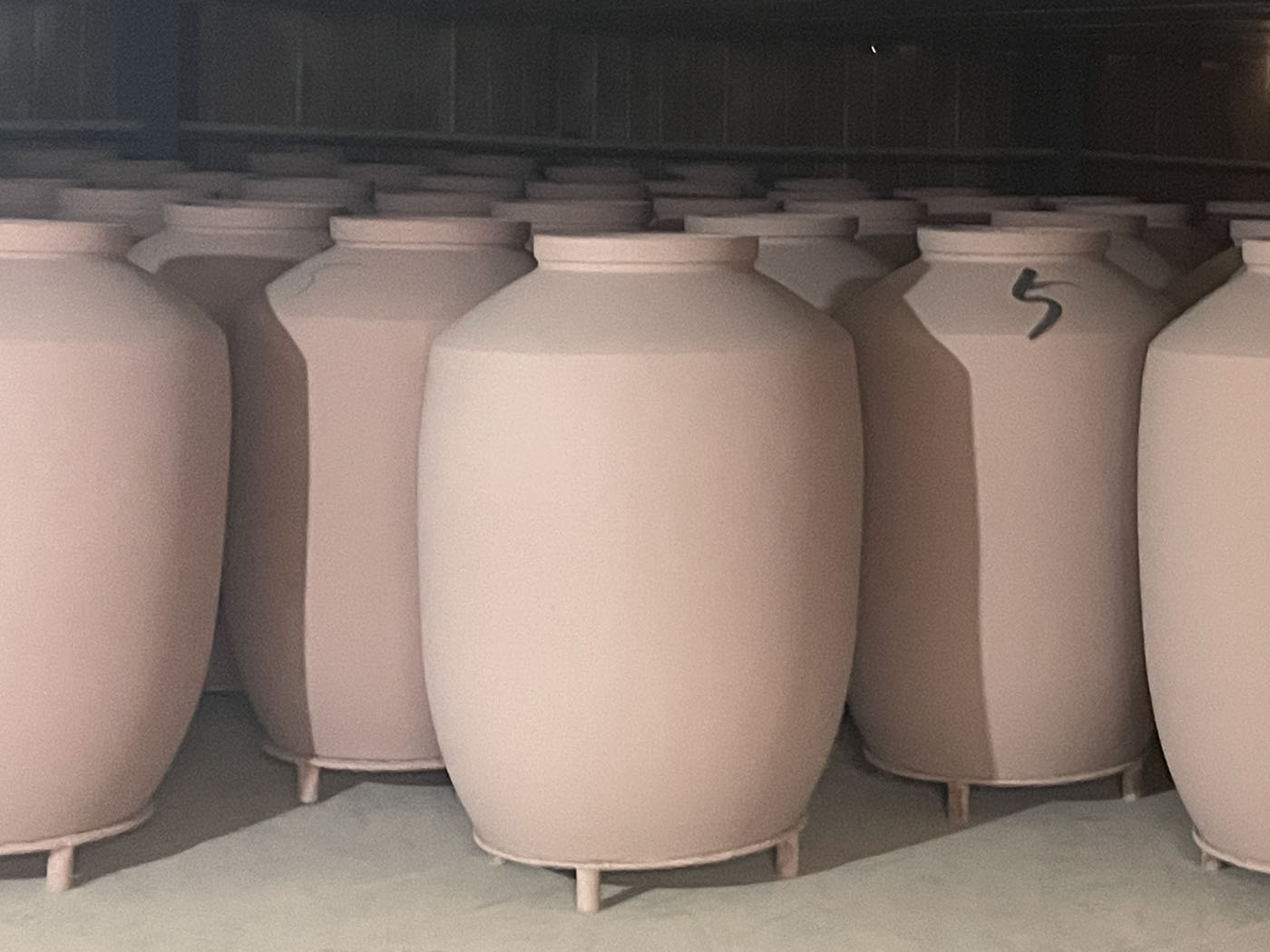
Drying
The repaired pottery jar needs to be naturally dried to evaporate the internal moisture, which takes approximately 7 days. The drying process should be gradual to avoid cracking caused by rapid dehydration. The dried pottery has a solid texture, ready for glazing and firing. Although the pottery jar is not yet completed, it already exudes a rustic charm.
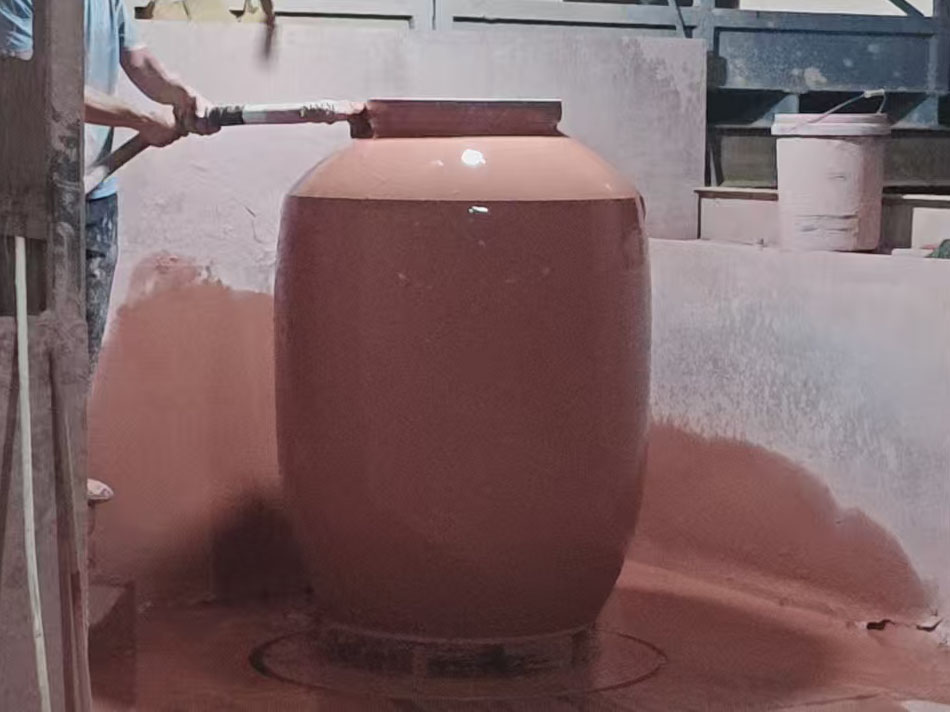
Glazing
Glazing is a crucial step in adding color and luster to pottery jars. Apply or immerse the ceramic glaze evenly on the surface of the pottery body, and the minerals in the glaze will blend with the pottery body during the firing process, forming a unique ceramic glaze layer. The selection of glaze colors is rich and diverse, and customers can choose according to the options we provide. Different colors can give pottery jars different textures and visual effects.
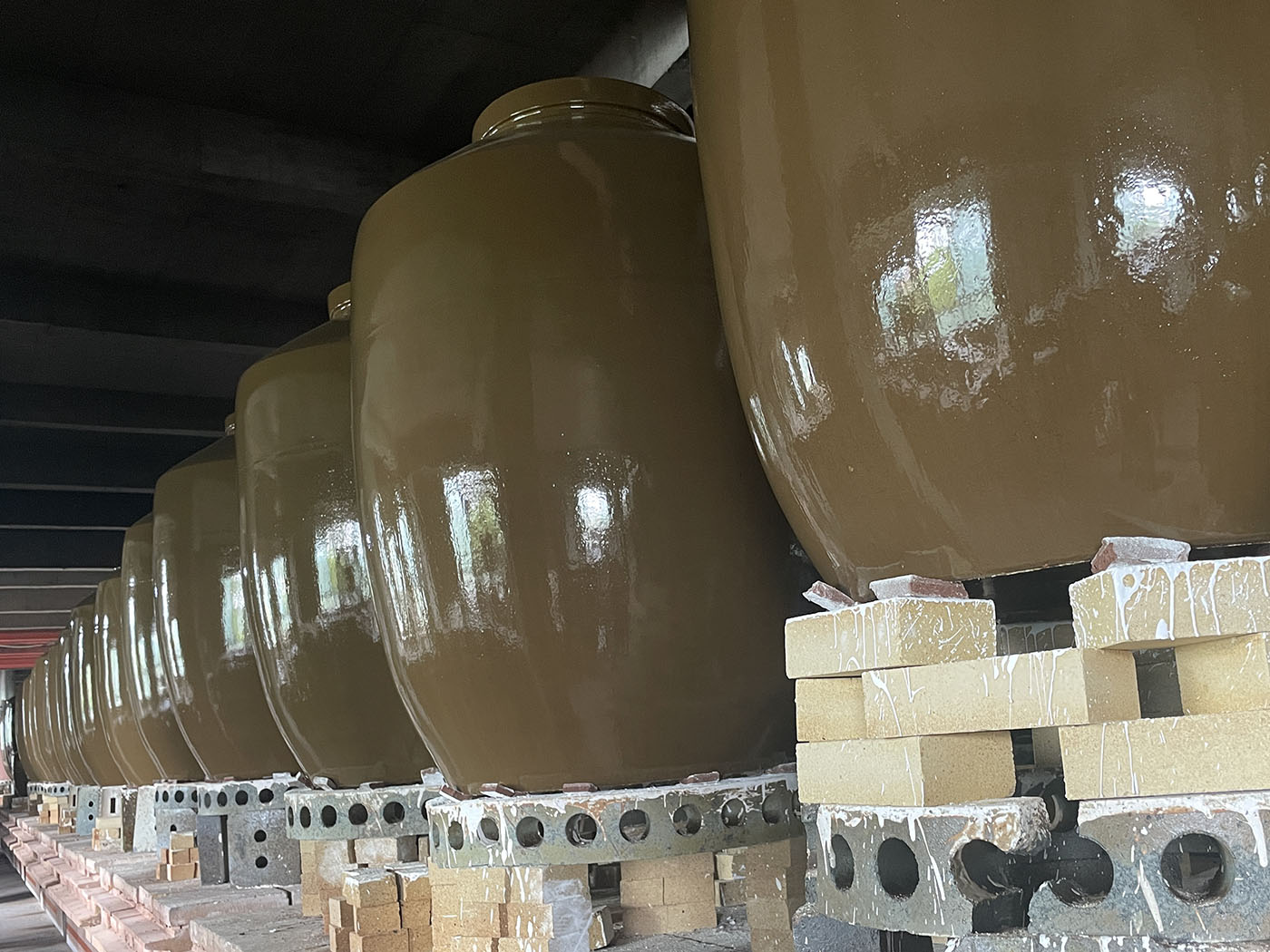
Firing
The process of sending glazed pottery jars into a kiln and converting them into pottery jars after high-temperature firing. At high temperatures of 1100-1370 ℃, the internal structure of clay changes and the glaze melts, forming hard, dense, and uniquely glazed earthenware products after cooling. Thus, a pottery jar bearing craftsmanship has been completed, showcasing the artistic charm of the fusion of excavation and fire.
Types Of Pottery
| Types of Pottery | Features | Representative Object | Analysis |
| Earthenware | 1. Low temperature firing (usually at 800 ° C-1150 ° C), incomplete sintering of the body;
2. High water absorption rate (>10%, even up to 20% or more); 3. The texture is relatively loose, soft, opaque, and the knocking sound is dull; 4. The color is mostly reddish brown, yellow brown, or off white (depending on the iron content in the clay and the firing atmosphere). |
1. Ancient daily-use pottery (such as Greek black painted/red painted pottery), red bricks, tiles;
2. Ordinary flower pots, coarse pottery tableware, pottery figurines, and some folk clay toys. |
1. The production cost is the lowest and the process is relatively simple;
2. Good breathability (suitable for flower pots and kimchi jars), but low strength, prone to water seepage (requires glazing to hold liquids), and not resistant to sudden cold and heat; 3. It is the earliest and most widely used type of pottery in history. |
| Fine Earthenware | 1. Using finer clay, firing temperature (approximately 1100 ° C-1200 ° C);
2. The billet is denser and has a lower water absorption rate (usually around 3% -10%); 3. The texture is coarser and the pottery is finer, with a lighter color (often white or off white); 4. Usually applied with white or opaque glaze (such as tin glaze). |
1. European painted pottery (such as Mallorca pottery, Delft blue pottery);
2. Daily tableware, sanitary ware (early), decorative tiles, glazed tiles before British bone china. |
1. More exquisite and beautiful appearance;
2. Strength, density, and impermeability are superior to coarse pottery; 3. It is an important category for the transition from coarse ceramics to higher end ceramics. |
| Stoneware | 1. High temperature firing (about 1200 ° C-1300 ° C) results in complete sintering of the green body, with extremely low water absorption rate (<3%, usually<1%);
2. The texture is hard, dense, and thick, with a crisp and pleasant knocking sound; 3. Colorful (gray, brown, beige, white, etc.), usually opaque; 4. Can be glazed (salt glaze, gray glaze, colored glaze, etc.) or not glazed (plain fired). |
1. Traditional Chinese purple clay ware, kimchi jars/wine jars, heat-resistant clay pots/baking pans;
2. Modern daily tableware (mugs, plates); 3. Practical flower vases, architectural ceramic panels, chemical acid resistant bricks. |
1. The practical pottery with the best comprehensive performance;
2. High strength, wear-resistant, corrosion-resistant, impact resistant, high temperature resistant, breathable and impermeable; 3. When not glazed, the touch is warm and simple, while when glazed, it is rich and varied. |
| Porcelain | 1. Using refractory clay such as kaolin, fired at extremely high temperatures (>1300-1400 ° C or above);
2. The body is completely vitrified, and the water absorption rate is almost zero (<0.5%); 3. The texture is extremely hard, delicate, lightweight, and semi transparent (translucent). |
1. Chinese blue and white porcelain, Jingdezhen white porcelain, European hard porcelain, bone china (including ashes);
2. High end tableware, tea sets, artworks, electronic ceramic components. |
1. Peak performance, extremely high strength, completely impermeable, resistant to chemical corrosion, smooth and easy to clean surface, with extremely high aesthetic value (white, translucent);
2. The highest process requirements and high cost. Often regarded as the ultimate form of pottery. |
Scale & Manufacturing Infrastructure
Shunfa has four advanced tunnel kiln production lines, with an annual production capacity of over 300000 pieces of different types of pottery. We have processing techniques for both coarse and fine pottery, while meeting the product needs of different types of customers.
● Equipment List: Compaction Machine, Automatic Glazing Line, Tunnel Kiln Quantity, Ball Mill;
● Annual production capacity: over 300000 pieces, meeting OEM/ODM OEM/ODM customized processing services;
● Factory area: 140 acres;
● Team size: Over 400 people;
● Logistics support: Provide cargo packaging solutions (wooden frame+shock-absorbing filling) and container loading optimization cases.
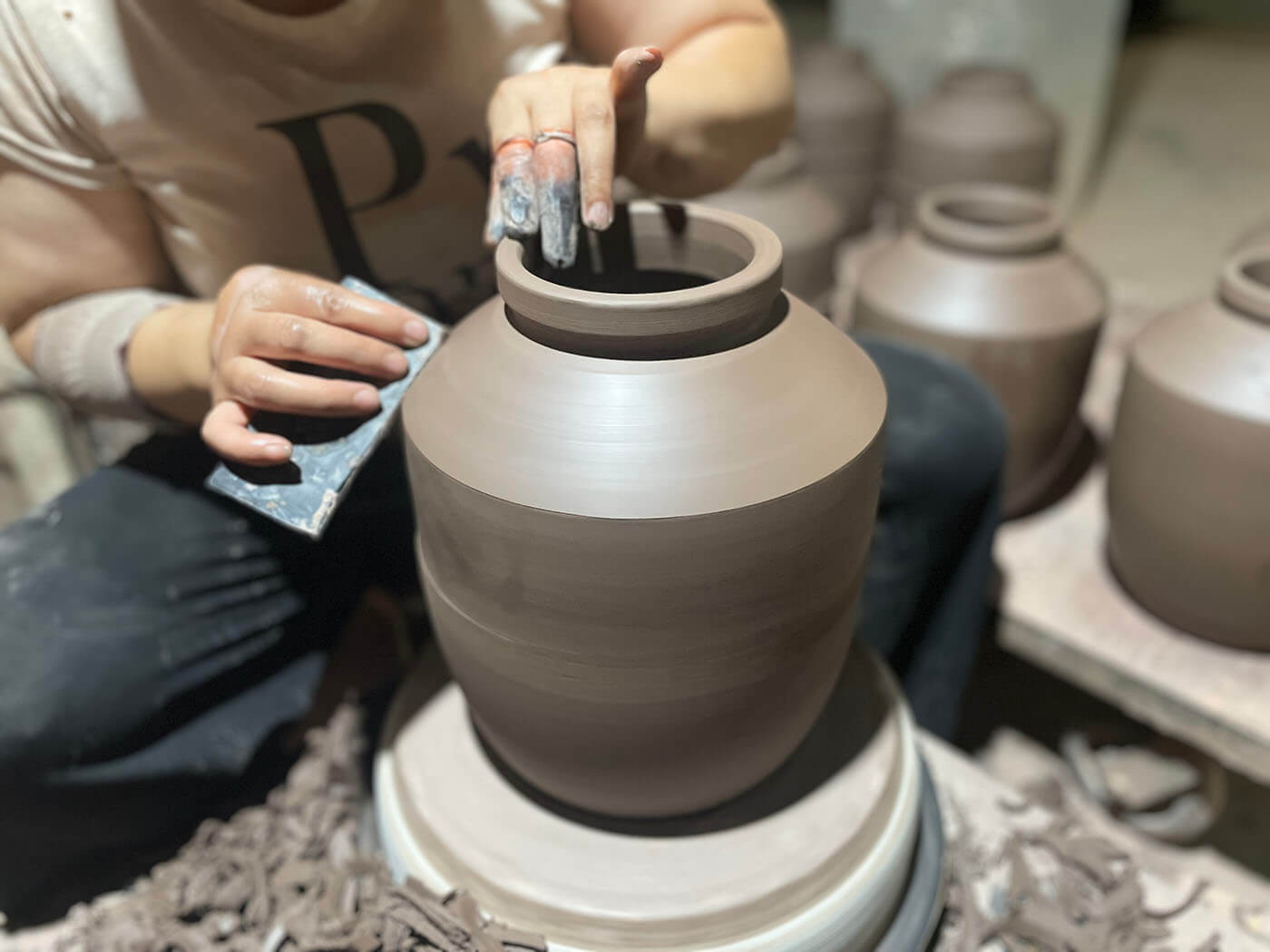
Industry Applications and Materials Science
Shunfa Ceramics is a well-known ceramic jar manufacturer and supplier in China, producing various types of ceramic products. The company also has the production process for both coarse and fine pottery. Can meet the needs of customers from different industries and provide one-stop OEM/ODM customized solutions for customers.
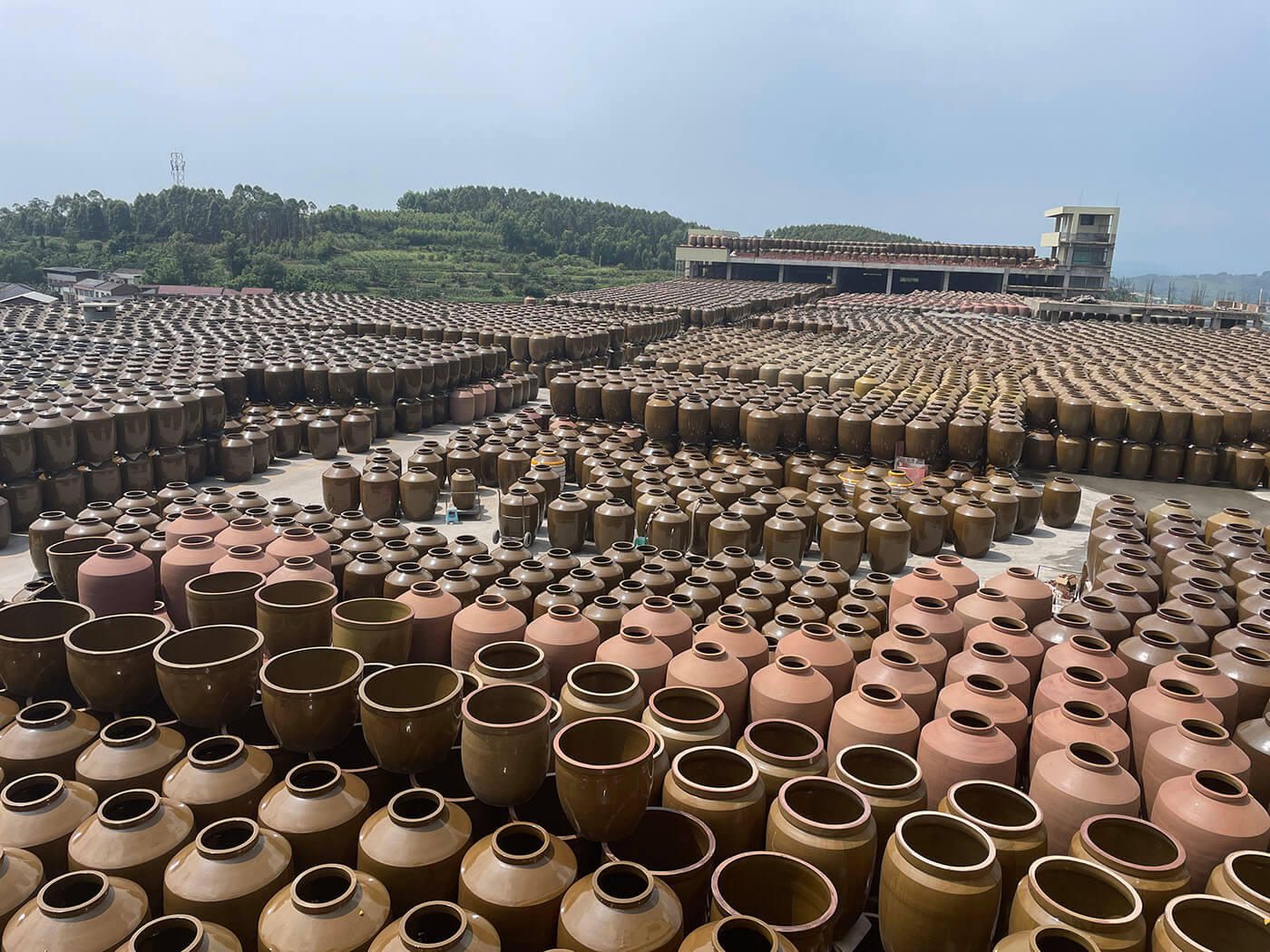
Application Scenarios
● Horticulture and Landscape
● Industrial and technological applications
● Art and Crafts
● Architecture and Decoration
● Daily necessities
● Aging and Brewing
Material Science
● Terracotta wine jar: with micropores and breathability, it effectively promotes the aging of wine and improves its quality
● Fermentation tank: with constant temperature and moisture retention, stable microbial fermentation environment
● Pottery flowerpot: with anti freezing formula and drainage properties, suitable for Nordic garden projects and preventing root rot
● Food storage tank: natural antibacterial properties, extended shelf life of grains and olive oil
